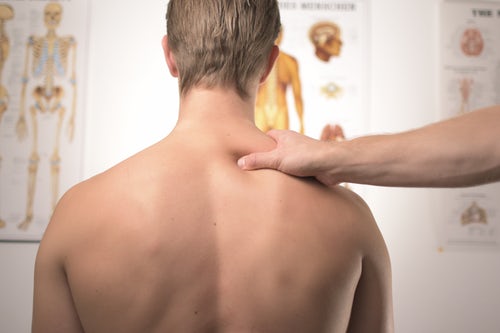|
BOOK NOW |
ASK ABOUT YOUR PAIN |
Home > Blog > Spinal Physiotherapy > Spondylolysis
Spondylolysis

Spondylolysis (spon-dee-low-lye-sis) is defined as a defect or stress fracture in the pars interarticularis of the vertebral arch. The vast majority of cases occur in the lower lumbar vertebrae (L5), but spondylolysis may also occur in the cervical vertebrae.
Basically it's an overuse injury due to wear-and-tear repeated load/stress that leads to a stress fracture in the spine.
Our spinal column is a series of connected spine bones (medically called "vertebrae") that are connected/sit on top of each other, and between each of them is a disc (this is the same disc that is herniated and cause "slipped disc").
The pars interarticularis (also known as pars) near the facet area of the vertebrae - this area is the weakest link of the joint/spine that is often loaded with compressive force.
who is more at risk of spondylolysis?
Spondylolysis affects roughly 5-6% of the population. This means out of a 100 individuals, 5 or 6 of them will develop and suffer from this condition.
It is more common in adolescents who participate actively in competitive events and competitive sports, because it's linked to
- over-training
- and especially over-training with specific biomechanics
- repetitive stress/load
The most common sports where spondylolysis is more common are individuals who participate actively and especially in competitive:
- dance
- cricket
- tennis
- gymnastics
The reason for these four sports because there is often a combination of
- spine forward-bending
- spine backwards-bending
- spine rotations
which is repeated biomechanical stress again and again.
Other than adolescents, spondylolysis can affect the general population and especially two risk factors:
- age
- weight/obesity
- genetics
As we age, we tend to lose bone mineral density and increases the risk of fractures. Patients who are overweight increases the natural curve of the lumbar spine, which increases stress and load on the spine. It is suggested that spondylolysis is also prevalent in certain populations and families too.
spondylolysis symptoms
The most common symptom of spondylosis is back pain that is aggravated with activities that includes/causes excesses backward bending of the back and lower back. Some patients report hamstring tightness and this is common because the body tries to support the back by tightening the hamstring muscles and at the same time the hamstring muscles becomes stronger because it is used to compensate for decreased functions of the back.
Unfortunately, patients with spondylolysis have an increased risk of developing spondylolisthesis which is the moving-forward of the vertebra as the spine's attachment to the back of it is weaker, and this may cause a nerve herniation/compression.
how to diagnose spondylolysis
To diagnose spondylolysis, the physician need to order lumbar spinal X-rays done in the position of oblique view. The reason for this is because oblique X-ray of the lumbar spine of a patient with spondylolysis will show an image of

"Scotty Dog Collar"
It is the "collar" which shows that a fracture has occurred. Of course, patients can also be diagnosed using CT scans and MRI too.
Upon diagnosing spondylolysis, the patient needs to immediately and temporarily stop the specific activity or sports to allow the bone to heal (most simple fracture healings take between 4-8 weeks to heal conservatively).
During this time, patient may be prescribed a neck/body brace and physiotherapy.
physiotherapy for spondylolysis

The main focus of physiotherapy for spondylolysis will be on:
- reduce pain experience ideally to zero if possible
- increase spinal stability with stabilizing muscles strengthening exercises especially for the core muscles and pelvic floor muscles
- postural correction of excessive extension in dynamic activities
- biomechanical correction to decrease unnecessary stress